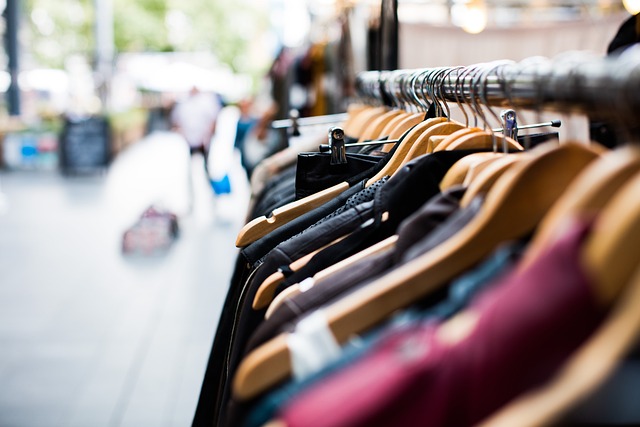By Beau Arnason, Executive VP, Asset Management at Steiner + Associates
The rise of online and mobile shopping has prompted years of introspection laced with concern from retail professionals. The convenience, accessibility, and growing popularity of online platforms spurred speculation from inside and outside the industry that brick-and-mortar retail was a dinosaur on the glide path to, if not extinction, then irrelevance.
Despite the pressures of COVID and the resulting increase in online commerce, brick-and-mortar has remained strong. In some ways, traditional retail spaces are experiencing a resurgence in the wake of a post-pandemic recalibration.
Brick-and-mortar isn’t just relevant, it retains its status as the most important and influential industry segment, a fact which isn’t expected to change anytime soon. Physical stores are still expected to account for nearly ¾ of all U.S. retail sales by 2024.
Looking to the future of brick-and-mortar retail, it seems clear that the contours of an industry space that has long been shaped by in-person engagement, experiential horsepower, and community social and economic impact will continue to emphasize those attributes. With that in mind, here are some of the most noteworthy trends—and a look at how they might influence the brick-and-mortar retail landscape of tomorrow.
Selectivity and specificity
In many respects, the future of brick-and-mortar retail is already here—or is at least already underway. While pandemic pressures eased quickly for most retailers, they did reveal the extent to which retail was somewhat overbuilt. Consequently, both retailers and commercial real estate owners and operators are becoming more selective in their locations. This is ultimately a welcome development for retail in general and a very healthy one for brick-and-mortar brands and businesses.
Retailers also have more detailed data about who their consumers are, replacing the blunt instrument of regional demographics with the scalpel-like precision of increasingly sophisticated metrics and shopper information. As a result, they now know where they need to be (and where they don’t need to be) with greater certainty and will continue to become more intelligent in seeking new opportunities. While an “A” level center may look somewhat different to various tenants based on individual priorities regarding location, experience, and co-tenancy, this selectivity is already prompting developers to find new ways to invest in and improve their properties to become more appealing to retailers.
Food, fun, and fitness
One of the most obvious ways that brick-and-mortar shopping has changed over time is the extent to which food and drink has evolved from an accent piece to a central feature of so many retail environments. Today, consumer priorities and preferences are evolving, and the best brick-and-mortar retail destinations are characterized by an increasingly diverse and dynamic mix of uses. That trend is likely to continue to become even more pronounced going forward. From a variety of restaurants and eateries, service retailers, and health and fitness concepts, to the ongoing influx of inspired new experience-driven entertainment options, the brick-and-mortar landscape is an increasingly colorful and engaging space.
Innovation and inspiration
From new technologies and amenities to new experiences, leasing, merchandising, and operational best practices, innovation will continue to be a driving force in brick-and-mortar retail. Easton Town Center in Columbus, Ohio, a regional town center that first opened in 1999, continues to remain an industry standard setter nearly a quarter of a century later, in large part because of a continued and consistent commitment to innovation.
Some of that is through new technologies and amenities like an award-winning mobile app and a real-time parking availability map, or by using new digital insights to customize and enhance market-specific offerings. Market-specific knowledge is really taking off, empowering owners to craft curated tenant mixes and store managers to practice more sophisticated inventory controls.
Perhaps the single most noteworthy feature of great shopping experiences is that they are not static. Easton’s continually evolving tenant mix and updated merchandising mix reflects a philosophy that sees building a high performing tenant roster as a continuous process of growth and evolution, and an understanding that great spaces, products, experiences and concepts need to reflect, and even anticipate, the evolving preferences and priorities of consumers. One way to do that is through platforms like the Easton Shop/LAB, a dedicated space for new-to-market concepts and online brands making their first foray into physical stores. However, sometimes it’s as simple as challenging tenants to do more with less space, reworking floor plans, and continued collaborative curation to make sure tenants are putting their best foot forward and that brick-and-mortar environments feel fresh and relevant. Expect to see more retail centers embracing crossover retail concepts like Amazon Style, as well as creative new services and synergies like Easton’s own on-site tailoring shop (that offers 20 percent off tailoring for any Easton purchase).
Easton illustrates a larger industry-wide reality: the imagined conflict between brick-and-mortar and “click-and-order” has already evolved into more of a collaborative model, where retailers use cross-channel synergies to improve the customer experience, unlock new opportunities, and drive sales.
Community gathering points
Community connections and community impact—both social and economic—will also continue to be a key ingredient in the brick-and-mortar recipe for success. Consciously designed infrastructure can help, like green space, public seating, fire pits, an abundance of natural gathering places, and public art and artistry to enliven a physical environment. Events and experiences will likely become an even more prominent part of successful retail operations. Tenant- and center-sponsored interactive exhibits and experiences like markets, festivals, concerts, holiday and seasonal programming, and other special events can all help transform a place to shop into a place to be. Retailers and retail centers will also continue to strengthen community ties by becoming more involved in charitable and philanthropic community initiatives.
Unique appeal
Distilling all of these elements down into a formula, it seems clear that what makes brick-and-mortar stores successful in today’s unique economic landscape—and what will continue to distinguish great physical retail environments in the future, is the ability to offer uniqueness: things that are difficult or impossible for consumers to get anywhere else. This includes products and brands, food and beverage choices, social and community events, convenient services, and one-of-a-kind experiences.
Retailers and retail owners and operators will continue to embrace the tech and tactics that facilitate those unique drivers—because they recognize that, as Easton’s 30+ million visitors per year show, this blueprint for the future of brick-and-mortar is not just exciting, it can be extremely rewarding.
About the author

Beau Arnason is the Executive Vice President of Asset Management for Columbus-based Steiner + Associates, the co-owner, developer and manager of the award-winning Easton Town Center. To reach Beau directly, email barnason@steiner.com
Related Articles

Embracing new concepts vs the return to brick-and-mortar
Balancing the return to physical retail and the development of new technologies to enhance customer experience and drive operational efficiency for long-term success.
Enartis to Acquire Parsec in Winemaking and Retail Deal
The deal will bring Enartis and Parsec together to help wineries manage every part of production more easily and efficiently, from grape to bottle.

A Practical Guide to Retail AI Use Policies for Retailers and HQ Teams
AI can bring new opportunities for retailers, but this innovation must come with responsibility.

Shoppers Warm to AI: 45% Say They Don’t Care if Product Picks Come from Humans or Algorithms, Constructor-Shopify Report Finds
Half of shoppers who’ve tried GenAI on retail sites say it’s always or often helpful; 1 in 5 would even trust AI over their partner to pick out a gift — report also highlights rise in social media for product discovery, sharp generational divides, and opportunities to improve ecommerce search.
By Alexandra Forsch, President, Awin US
Consumers are understandably skeptical about politicians’ and businesses’ efforts towards more sustainable practices. Swedish climate activist Greta Thunberg summed up this collective feeling beautifully with the above response to the 2021 UN Climate Change Conference.
And yet despite the skepticism, sustainable commerce drives more customer choices every day – from where they shop to the specific products and services they choose. According to recent research, 53% of shoppers say sustainability is a driving factor in their purchasing decisions. Furthermore, 73% of Gen Z and 68% of millennials report they are willing to pay more for sustainable goods. These figures make every savvy retail CMO take notice.
As a retailer, how do you appropriately join the sustainability movement? Many well-intentioned companies tread lightly around green topics and eco-commerce initiatives. The challenge with pursuing a sustainability agenda or talking about your ecofriendly practices is the terms can be ambiguous.
Should you be a registered Bcorp? Is it enough to offset carbon footprint by planting trees? Should you only buy local, or is it better you buy from businesses eradicating single-use plastics? These questions are complicated further by accusations of corporate ‘greenwashing.’ And sustainability is just one part of a broader discussion around what it means to be ‘ethical’ today. Environmental concerns coexist alongside other vital social issues: diversity of representation, inclusivity, accessibility.
Transforming to a more sustainable business
For today’s consumers, conscious commercial actions speak louder than words or labels. Shoppers want brands to proactively demonstrate commitments through how they conduct business. They want to see you do.
That said, consumers aren’t looking for a grand gesture. Loose change can enact big change and there are several small steps you can take for great impact.
One way is to collaborate with manufacturers and suppliers to identify ecofriendly products on your shelves and sustainable swaps you can make. In the food and beverage sector, for example, retailers are placing additional focus on ensuring sustainable, local growing practices. And in consumables, several merchants are stocking lower-impact ‘refill’ packages that customers can reuse instead of single-use containers. While this step might seem like a daunting task, it isn’t a shift that needs to happen overnight. Look at leading retailer The Body Shop. Currently, more than 68% of its packaging can be recycled. With a goal to have all products fully-recyclable by 2025, it’s conducting a review of The Body Shop’s whole product portfolio to explore how to increase this percentage in the future – becoming more eco-conscious smartly versus quickly.
Another way to reduce your company’s carbon footprint is across shipping operations. Many brands are collaborating with logistics partners to deliver more sustainably. These innovations include lighter and compostable materials, product packaging that doesn’t require an additional box for shipping, reversible mailer sleeves that double as return packaging and ‘green delivery days’ in which they transport multiple packages at once instead of making a series of trips to the same location.
One final way you could improve your brand’s sustainability is by offering on-premise receptacles to collect disused items (regardless of whether they were initially sold by you) to be recycled or repurposed – especially e-waste, beverage containers and clothing. The partnership between Madewell and Cotton is one successful example of this practice, transforming donated denim into housing insulation and offering customers $20 off a new pair of jeans as a thank you.
The new wave of partnerships
As a for-profit company, becoming a more sustainable enterprise can’t be at the expense of your bottom line. In fact, adopting more ecofriendly practices opens up avenues to connect with that 53% of consumers driven to make sustainable purchases. So how do you reach them?
One of the best ways to engage with this target audience is via affiliate marketing partnerships. A growing number of affiliate partners (think influencers, bloggers, media houses… even cashback sites and coupon portals) specialize in sustainable and eco-conscious topics, curating recommendations of brands aligned with positive values that consumers can trust to buy from. They see the flexible, controllable nature of the performance-based affiliate marketing model affords a chance to monetize traffic with like-minded retailers while fulfilling their missions.
In these partnerships, you and your team collaborate with these trusted authorities by offering a commission for accountable customer sales and leads, creating relationships that reward sustainability partners when they drive business results for you and help fulfill both their mission and yours.
Such partnerships help shoppers feel part of the drive for a more sustainable world. They empower customers to express their values in their everyday purchases. By buying from you, they demonstrate a commitment to a more eco-conscious future. And this ethical ‘alliance’ helps drive increased purchases and shopper loyalty over shared values in how you drive future growth.
Putting a strategy into practice
The first step in pursuing these new eco-partnerships is to acquaint yourself with the many partners anxious to collaborate on a performance basis and whose eco-objectives and equities align with your own.
If you have an affiliate marketing team, they may already be familiar with some of these businesses. Further, your larger marketing team might have someone passionate about these initiatives who can help guide your efforts.
If your company’s sustainability efforts focus on something other than environmental issues, there are partners also supporting other worthwhile causes. For example, you can work on a performance basis with groups that support active-duty soldiers and veterans, promote universal healthcare access, fund better education, empower individual-level charitable giving, etc.
Whatever your goals, there are partners ready to help you take action. They align investment with your values, help your business grow and make your customers not only feel better about the initial purchase they make with you but help keep them coming back for more.
About the author

Alexandra Forsch is president of leading affiliate marketing platform Awin. As a seasoned online marketing professional with over 20 years of experience and a proven record of outperforming corporate goals, Alex has a strong background in performance marketing, media planning and buying, online marketing solutions, strategic and financial planning, team building and client relations. She started her journey with us in 2011 as Head of Account Management for buy.at and quickly progressed to lead the full North America operation, developing a high performing team and successful partner network as well as overseeing the US migration of buy.at to Affiliate Window, and later the rebrand to Awin in 2016. In 2019, Alex was appointed President of all US operations when unifying leadership of Awin and ShareASale, with goals to expand upon our strategic solutions offered to clients across both platforms in North America.


 for the latest news and job opportunities in retail tech
for the latest news and job opportunities in retail tech 